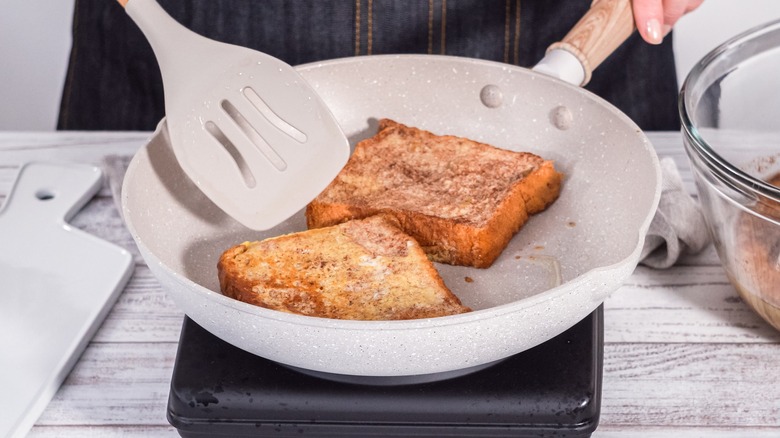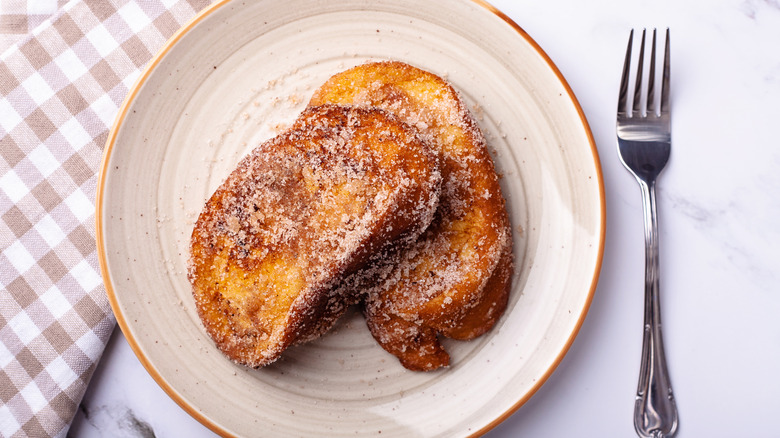When Making French Toast, Should You Use Oil Or Butter?
You may define perfect French toast by a soft and custardy center, and cinnamon-y, vanilla spiked flavor. But a critical quality of this breakfast favorite is also undoubtedly the texture of the crust. Without it, we cannot hope to enjoy that contrasting crispness, the satisfying bite smothered in creamy butter and sweet syrup. And yet, as simple as it may seem, achieving that ideal surface is a tricky business.
You may have a tried and true method for making easy French toast, but some cooks wrestle with a polarizing question no matter their go-to formula — and that's whether to cook in butter or oil. If your house is divided, there's good news that will make everyone a winner, because the answer is ...(drum roll): both.
Combining these two cooking fats brings not just full, complex flavor, along with that iconic golden brown color, but lots of scientific benefits to the process, too. While you can technically cook with either butter or oil, there is some belief (and also some debate) that combining them manipulates the smoke point. A higher smoke point is important in this process because it means you can cook at a lower temperature for longer, which allows time for the butter to brown without burning, and for you to really develop that caramelized crust. It's also important for getting your slices evenly cooked all the way through.
Fixing your dual-fat French toast
You'll want to use a bit more butter than oil, about 1 ½ tablespoons of the former to 1 teaspoon of the latter is a good starting point. Make sure to go with a medium to low heat, and give it long enough that your butter is fully melted so you get a coating across the surface of your pan. From there, the time it takes to fry up your French toast will depend on how thick your bread is as well as the type (whether you decide Japanese milk bread is the perfect choice, or prefer problem-solving Hawaiian rolls), and your desired doneness — but should take about a minute or two before you flip and finish. You can replace the oil and butter as needed should pieces begin to come out too dark — just stick to the same ratio.
You can use canola or vegetable oil here, but if another flavor of oil speaks to you, take the opportunity to add another dimension. Olive oil may have grassy notes complementary to butter, or bring subtle contrasting peppery qualities. Nut oils like pistachio, almond, or walnut might work with your French toast vision, and may even have higher smoke points than olive or canola, while sesame oil contributes a touch of a savoriness. There are a ton of delicious twists on French toast to stir your cravings, but this tip will ensure every one is crisped to perfection.

